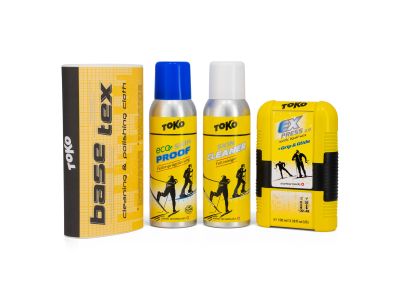Cross-country ski waxes are essential for improving the performance and glide of your skis on snow. There are different types of waxes available, each designed for specific snow conditions and temperatures.
What types of cross-country ski waxes are there?
The most commonly used types of waxes in general include:
- Glide waxes: Glide waxes are applied to the ski bases of cross-country skis to reduce friction and improve glide. They come in different formulations for different snow temperatures and conditions, such as cold, warm, or all-purpose waxes.
- Kick Waxes: Kick waxes, also known as grip waxes, are applied to the kick zone (under the foot) of classic cross-country skis to provide traction and grip when kicking. Kick waxes are made in the form of hard waxes or klister waxes (sticky and flexible).
What are the benefits of liquid waxes?
Liquid waxes are a convenient alternative to traditional hard waxes. They are easy to apply and offer good performance on snow. Liquid waxes are suitable for quick application.
How to use cross-country ski waxes correctly?
The use of waxes for cross-country skiing includes:
- Preparation: Before applying any wax, make sure the surface is clean and dry. Use a ski scraper to remove any old wax or dirt from the ski base.
- Application: Depending on the type of wax (gliding or rebound), follow the specific application instructions. Gliding waxes are melted onto the ski base with an iron and then scraped and brushed to create a smooth surface. Kicking waxes are applied in thin layers and corked or smoothed with a corking tool.
- Selection: Choosing the right wax depends on the snow temperature, snow type (new, old, wet, dry) and skiing conditions. When choosing a wax, refer to waxing charts or consult experienced cross-country skiers.
How to choose a wax for cross-country skiing?
Choosing the right wax for cross-country skiing depends on several factors such as snow temperature, snow type and skiing conditions. Here are some general tips to help you choose the right wax:
- Consider the snow temperature: Different waxes are designed to work best in certain temperature ranges. It is important to check the snow temperature and pick a wax that matches it. For example, colder temperatures require harder waxes, while warmer temperatures require softer waxes.
- Snow type: The type of snow (wet, dry, icy, etc.) can also affect your wax choice. Some waxes are designed to work better in certain snow conditions, so take this into account when picking a wax.
- Wax type: There are different types of wax, such as glide waxes, grip waxes, and all-purpose waxes, that can be used in different conditions. Make sure you choose the right type of wax for your needs.
- Test and experiment : It's a good idea to try different waxes in different conditions to see which one works best for you. Keep track of how each wax performs so you can make informed decisions in the future.

